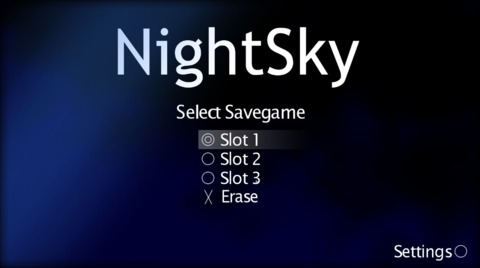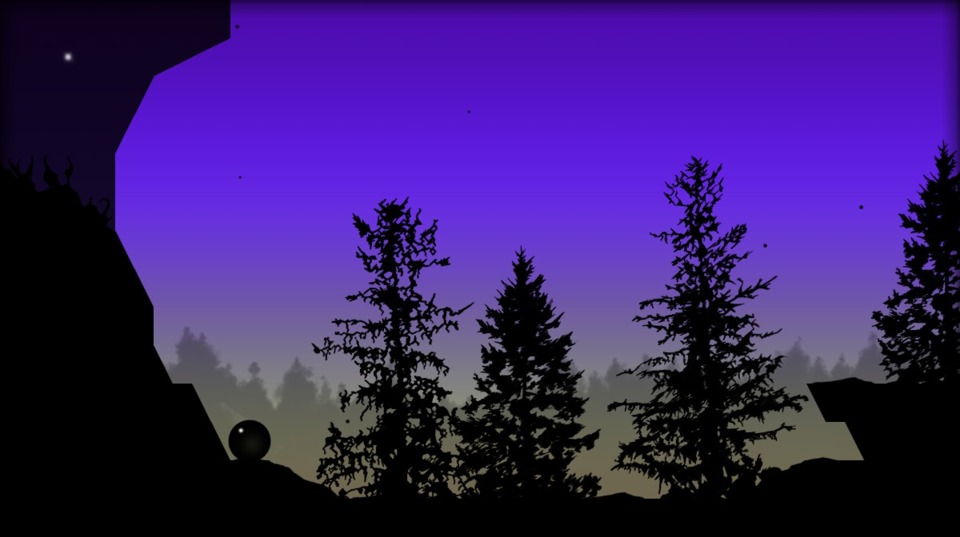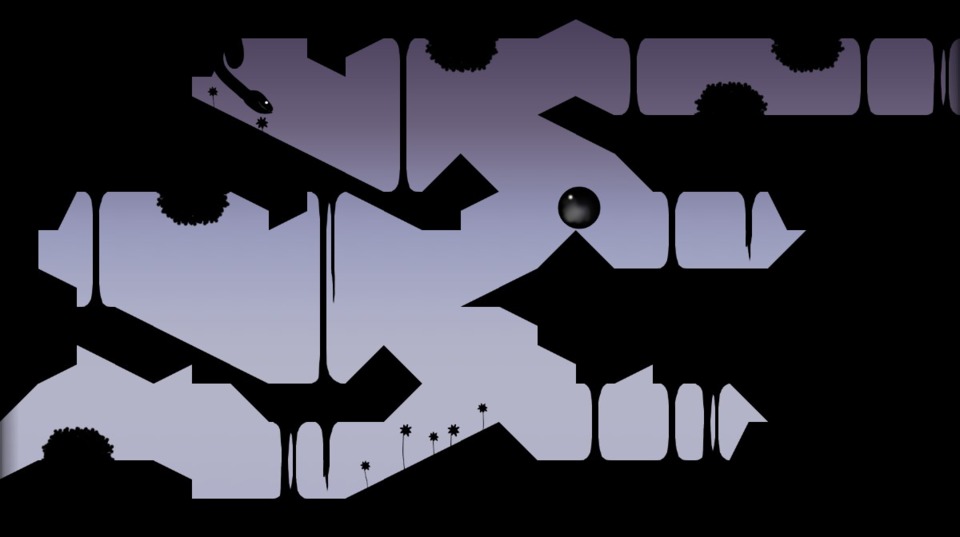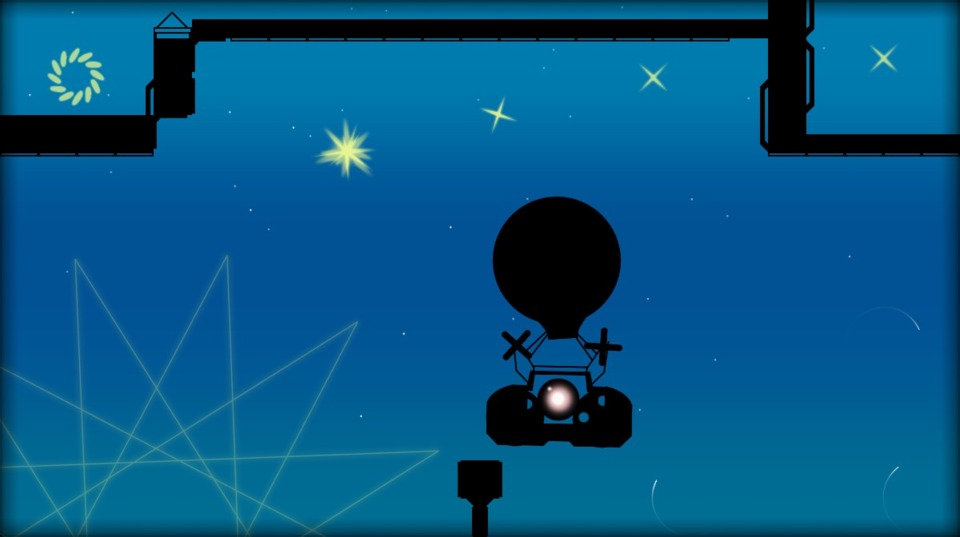Mento's May Mastery: Day 08: NightSky
By Mento 0 Comments
I've been ruminating on how I can go about improving this feature, beyond possibly excising all these pre-amble intros, and I came upon a realization about the critical discussion of this medium. Video games are both a relatively new medium (in the grand scope of human achievement) yet one that is constructed piecemeal of many extant artforms that have essentially been combined together for potentially greater effect. Aspects like visual/art design, animation, music, storytelling, characterization and cinematography were all established forms of expressing oneself long before video games came along; I'd say they were all at least a century old, if not even older in some cases. Game reviews also tend to factor in a lot of elements from the product review format, focusing instead on the game's technical shortcomings and how the game either succeeds or fails to achieve the primary directive its developers set out for it.
Subsequently, when it comes time to critiquing a game, we're left with this big dilemma: either attempt to describe the gameplay in a way that isn't filled with the usual buzzwords like "concise" or "robust" or "layered", or fall back to one of the many safer paths of critique - art, sound, narrative, technical competence - each of which has a long-established set of guidelines to follow and are far more conducive to someone who came upon criticizing games as a career via a liberal arts degree, being a literal-minded programmer type focused on function over form, or making the lateral jump from some other critical field (movies being the most common). Critiquing games purely on their gameplay - i.e., the one unique aspect of video games - is still relatively difficult, in part because it's still a fairly novel paradigm with which to judge an artform (regardless of whether or not you believe games to be so, and I still think that's a spurious debate not worth having - a case of both sides refusing to agree on where to set the goalposts) and in part because often when we consider whether or not a game has good (or bad) controls it ultimately derives from intuition, and it's far harder to put a gut feeling into words.
For the time being, most video games will be judged chiefly on their presentation and mechanical competence. The more important stuff gets a little less attention. It's why I endeavor to focus on game mechanics first and foremost: the features the designers invented (or borrowed) to keep the player hooked; how they chose to distinguish their game from a crowd of imitators, if any such measures were even attempted; and the myriad problems that may have arisen from their choices, and the methods they found to resolve them.
Still, if I'm going to write up all these game appraisals at 3am, I'll probably be falling back to wearily talking how pretty the game is and how messed up certain bugs are far too frequently. So much for all my pretensions.
NightSky

Wouldn't feel right to do a May Madness series without featuring at least one of the ethereal puzzle games from the nexus of Nordic nonsense that is Nicklas "Nifflas" Nygren . It's like a tradition, or an old charter or something. To be fair, I've only covered one of his games in a prior May Madness (that would be Saira, which I looked at in 2013's May Madness More #10), but it feels like I keep bumping into them and wondering why I have so many games from this single, though prolific, Indie developer.
Of special note is his most recent game, Knytt Underground, which I reviewed back in 2013. The Knytt games are SpaceWhippers that tend to de-emphasize combat and conflict, instead focusing more on mellow exploration and puzzles. The chill atmosphere is generally enhanced by Nifflas's frequent use of light jazz, ambient sounds and serene silhouette backdrops of the natural world. Knytt Underground is a culmination of a lot of smaller Knytt projects, creating an immense 2D map of places to explore. Because the game lacked combat, it instead chose to challenge the player with various physics puzzles involving balls: the player character would assume a ball form and have to navigate a room of levers, counterweights and pulleys to reach their desired destination.

Of course, ball physics are nothing new in SpaceWhippers. The grandmommy of them all, Nintendo's 1986 solitary sci-fi sensation Metroid, provided its heroine with an early Morph Ball (or Maru-Mari) upgrade that allowed her to become a compact sphere that could squeeze through narrow spaces and had a number of environment puzzles attached to it. Nifflas probably realized he could get a lot of puzzle mileage out of a Morph Ball ersatz when it came time to develop a proper length SpaceWhipper. Of course, when you have so many ideas that you don't know what to do with, it leads to interstitial games like NightSky.
NightSky is a series of linear challenges involving a glowy marble protagonist and the 2D environment around them. The puzzles are vaguely linked by "worlds", but beyond a background theme and a few apposite mechanical elements (like slippery floors for the ice area), they're largely interchangeable. As too are the puzzles, which really don't have a lot to link them together in the order they're in besides a very gradual and fair difficulty curve. The player is given four keyboard commands beyond standard right-left movement: one speeds up the rotation of the ball, allowing it to move faster and get over higher jumps; the second slows it down, allowing for precision platforming (it tends to roll around a lot without this function key); the third activates specially marked items on the screen (up/down allows the player to select between multiple hotspots) and the fourth resets the stage if the player gets stuck. While the fourth is ever-present and the third is entirely dependent on the environment, the game will often take away one or both of the player's standard "powers", force one to stay on permanently or simply deprive the player of any control of the ball whatsoever. In those cases, the player might be manipulating items in the environment around the ball to get it to move (such as pinball flippers). Occasionally, the ball is placed in a device that allows it to fly across the screen or gently float up, but it's usually linked to some sort of control scheme the player needs to figure out. There's also cases where the player can reverse gravity, though once on the ceiling the lateral controls become reversed as well (since you're directing the rotation of the ball rather than moving it left and right directly).

It's been an endlessly inventive game so far, given the amount of freedom with its loose structure for crafting each of its little set-pieces. Most puzzles come in groups of two or three screens, and falling off the world or forcing a reset will start the player back at the very first screen, making certain areas a little more challenging (and repetitive, especially if you have the first screen's puzzle down pat and keep messing up the second) than they perhaps need to be. It's also quite short: I reached the game's final area within a few hours, though it can often feel like a lengthier game from the sheer number of puzzles it presents. As was the case with HAL's recent 3DS game Box Boy!, it's more a case that the game doesn't want to outstay its welcome, and is happy to let you breeze through the puzzles it has at a steady clip than to artificially pad-out the game's runtime with many instances of the same puzzle only made slightly harder. For that reason, I can respect what NightSky is.
I'm presently in the last area: in order to proceed to the very end of the game, I need to find enough hidden collectibles from the previous stages. The game is at least generous enough to let me visit any individual set of puzzle rooms, as well as tell me which ones actually hold the hidden collectibles I need. As is currently the case with the nigh-complete Life of Pixel, (which I swore I was done with, except... I only have a handful of stages to go!) I might just hop back into NightSky occasionally to edge a little closer to a 100% complete state. When I'm not running around doing wiki stuff or writing about Super Mario 64, anyway...

